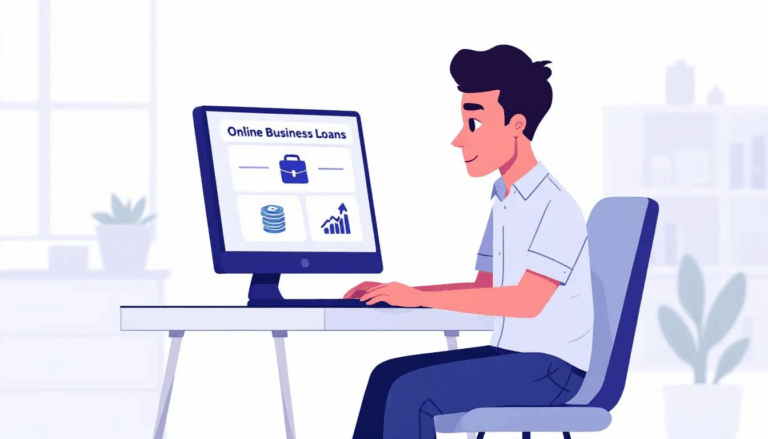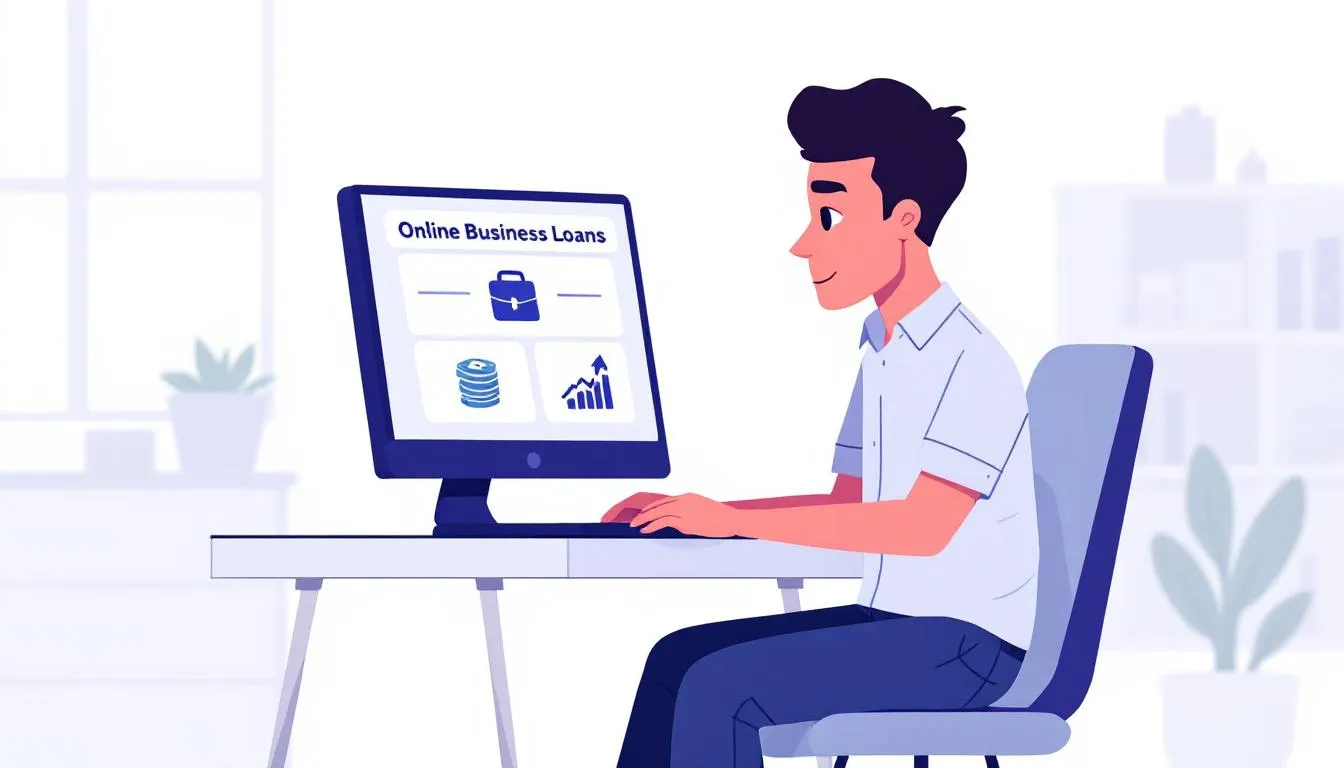What is Small Business Financing?
Small business financing is all about raising capital to start or grow your small business. There are various ways to obtain this money, including taking out loans, utilizing credit lines, securing grants, crowdfunding for help, or even tapping into your own savings. Running your own business is a dream come true for many, and small business financing helps make it a reality.
When you have a small business, there are lots of things that cost money. You might need to buy equipment for your bakery or stock up on inventory for your toy store.
Perhaps you’re looking to hire more employees or launch an extensive marketing campaign to showcase your awesome products to a broader audience. That’s where small business financing comes in handy – it helps cover all these expenses and more!
What are the different Funding Sources for Small Businesses?
There are several financial resources available. Let’s look at some different ways you can secure funding for your venture.
Traditional Financial Institutions
Traditional banks and credit unions have long been a popular choice for small business owners looking for capital. These loans provide long-term funding and typically offer lower interest rates than other options. However, they often require collateral and have strict eligibility criteria compared to other financial institutions.
Alternative Lenders
If you need quick access to funds or don’t meet the requirements of traditional banks, alternative lenders can be a viable option. These lenders offer more flexibility and have less stringent requirements than conventional banks. While they may provide faster approval times, it’s important to note that they often charge higher interest rates.
Business Credit Cards
Credit cards can be a convenient way to finance your small business expenses. They allow you to make purchases and pay them off over time while building your credit history. However, it’s crucial to use credit cards responsibly and avoid accumulating excessive debt that could hinder your financial stability.
Crowdfunding Platforms
In recent years, crowdfunding platforms have gained popularity as an alternative method of financing small businesses. These platforms enable entrepreneurs to raise funds from numerous individuals who support their business idea. It provides an opportunity for supporters and potential customers alike to contribute financially while also creating buzz around the venture.
Crowdfunding is very low risk for business owners. Crowdfunders don’t generally receive a share of ownership in the business and don’t expect a financial return. If your crowdfunding plan fails, you’re typically under no obligation to repay your crowdfunders.
Equity Financing
Equity financing is a method of funding a small business by selling shares of ownership to investors. This allows the company to raise capital without incurring debt. Investors typically want to get to know you and your business before they commit to investing.
One type of equity financing is venture capital, which involves investment from professional or venture capitalists. These investors provide funding in exchange for a stake in the company and often offer guidance and expertise to help the business grow. There are also angel investors who might invest as silent partners.
The process of obtaining venture capital generally follows a standard order of basic steps. Raising venture capital may require you to prepare a business plan, value proposition, and financial projections. Successful companies often form hypotheses and test all aspects of their business to attract investors.
Sensible investors stage their commitment to a company, giving enough money to conduct a value-changing test. The process to raise venture capital has been likened to dating.
The trade-offs involved in giving up equity include reduced control over the company. Investors typically want to own a large, valuable share of your company in return for their investment. Almost all venture capitalists will want a seat on the board of directors.
Self-Funding (Personal Funds)
Many entrepreneurs prefer self-funding because it avoids the complexities of raising venture capital or taking on debt. Self-funding allows you to retain full ownership of your business, which can be seen as advantageous compared to external funding.
Self-funding can lead to losing personal savings and affecting relationships with family and friends who invest. Self-funding often means you have to be careful not to spend more than you can afford, particularly if using retirement funds. Crowdfunding, like self-funding, allows you to maintain ownership, provided you offer rewards instead of equity.
What Small Business Loans are Available?
Here are some of the most popular small business financing options. Many of these loans are available through our lender network.
Business Term Loan
- Loan amount: $10k – $10 million
- Factor rates: Starting at 1%-4% p/mo
- Term: 3 months – 10 years
- Speed: 1-3 business days
Business term loans are a type of small business loan that provides a lump sum of money to the borrower, which is repaid over a fixed term with interest. These loans are typically used for specific purposes, such as purchasing equipment, expanding operations, or refinancing debt. The repayment terms for business term loans can range from a few months to several years, and the interest rates can vary depending on the borrower’s creditworthiness and the lender’s terms.
Business Line of Credit
- Loan amount: $1k – $1 million
- Factor rates: Starting at 1% p/mo
- Term: Up to 36 months
- Speed: 1-3 business days
A business line of credit is a flexible financing option that allows businesses to access funds up to a predetermined credit limit. It functions similarly to a credit card, where companies can borrow from the credit line and repay funds as needed.
This type of financing is often used for short-term working capital needs, such as managing cash flow, purchasing inventory, or covering unexpected expenses. Business lines of credit allow businesses to access funds quickly and conveniently, providing flexibility and financial stability.
Equipment Financing
- Amount: Up to $10 million per piece of equipment
- Factor rates: Starting at 6.5%
- Term: 1-6 years
- Speed: 3-10 business days
Equipment financing is a type of credit that allows businesses to purchase or lease equipment needed for their operations. It provides a flexible solution for businesses to acquire expensive equipment without paying the total cost upfront.
With equipment financing, businesses can preserve their cash flow and allocate funds toward other essential expenses. This type of credit is often secured by the equipment itself, making it a viable option for businesses of all sizes.
SBA Loans
- Amount: $50k – $10 million
- Interest rates: Starting at Prime + 2.75%
- Term: 10-25 years
- Speed: 8-12 weeks
SBA Loans are a type of financing offered by the Small Business Administration (SBA) to help small businesses access capital. SBA loan programs are designed to provide affordable funding for various purposes, such as purchasing equipment, expanding operations, or refinancing existing debt. You can use Lender Match to find lenders who offer SBA-guaranteed loans for small businesses.
SBA Loans usually have longer repayment terms and lower interest rates than other business loans, making them an attractive option for small business owners. However, they often require a thorough application process and collateral to secure the loan. SBA loans offer easier qualification and lower down payments compared to traditional loans.
Merchant Cash Advance (MCA)
- Loan amount: $5k – $5 million
- Factor rates: Starting at 1%-6% p/mo
- Term: Up to 24 months
- Speed: 1-2 business days
Merchant cash advances are a funding option where a financing company provides a lump sum payment to a business in exchange for a percentage of its future sales. Unlike traditional loans, merchant cash advances do not require collateral or fixed monthly payments.
Instead, the lender collects a portion of the business’s daily credit card sales until the advance is paid off. This flexible repayment structure can be beneficial for companies with fluctuating sales volumes. However, merchant cash advances often come with high fees and interest rates. This financial solution is a transaction, not a loan.
Working Capital Loans
- Funding Amounts: $1k – $5 million
- Factor Rates: Starting at Prime + 2.75%
- Terms: 3 months – 10 years
- Funding Speed: 1-3 business days
Working capital loans provide businesses with the necessary funds to cover their day-to-day operations. These loans are typically used to manage cash flow, purchase inventory, pay for operating expenses, or invest in business growth.
Unlike traditional loans, working capital loans are often unsecured and have shorter repayment terms. They are a popular choice for small businesses or startups that need immediate access to capital to keep their operations running smoothly.
What are the Do’s and Don’ts of Financing Your Small Business?
There are certain things business loan applicants should do and others to avoid. Let’s look at the top nine dos and don’ts of small business funding.
Do Create a Solid Business Plan
A well-crafted business plan is essential when seeking funding for your small business. It showcases your vision, goals, and strategies, making it more appealing to potential lenders or investors.
Your business plan should include details about your target market, competition analysis, financial projections, and your intended use of the funds. By demonstrating a clear roadmap for success, you increase your chances of securing the necessary financing.
Creating a realistic business budget helps manage startup costs, working capital, and ongoing expenses. It’s essential to conduct thorough research and have a clear understanding of all costs involved in running your business.
Don’t Overlook Alternative Funding Options
While traditional bank loans are a popular choice for many small businesses, it’s essential not to overlook alternative funding options. Crowdfunding platforms allow you to raise funds from many people who believe in your business idea.
Small business grants are another avenue worth exploring, as they provide non-repayable funds. Exploring these alternatives can give your small business an extra boost without relying solely on loans. Consider SBA grant programs like Small Business Innovation Research.
Do Research and Compare Different Small Business Loan Options
Before settling on a specific loan option, it’s crucial to conduct thorough research and compare different lenders. Look into factors such as interest rates, repayment terms, fees, and eligibility criteria.
Consider traditional banks and online lenders to find the best fit for your unique needs. Remember that each lender may have different requirements and offerings, so taking the time to compare will help you make an informed decision. It’s essential to read the fine print before signing any loan document.
Don’t Borrow More Than You Can Realistically Repay
While securing adequate funding is vital for growing your small business, it’s equally crucial not to borrow more than you can handle. Taking on excessive debt can lead to financial strain and make it challenging to meet your repayment obligations.
Carefully assess your business’s ability to generate revenue and calculate how much you can repay each month. This will help you avoid unnecessary stress and maintain healthy financial stability.
A business loan is a binding contract that requires careful reading and understanding before signing. Making all loan payments on time is crucial for maintaining a good credit rating.
Do Research and Understand the Requirements
Researching and understanding the specific requirements for small business funding is crucial. Lenders typically consider factors such as credit score, collateral, and financial documentation when evaluating loan applications. Make sure you meet these requirements before applying to increase your chances of approval.
Don’t Neglect to Check and Improve Your Credit Score
Your credit score plays a significant role in determining whether your loan application will be approved or denied. Neglecting to check your credit score before applying for a loan is a mistake that could cost you dearly.
A low credit score can result in higher interest rates or even outright rejection of your application. Take the time to review your credit report, identify any errors or areas for improvement, and work on boosting your score before applying for financing.
Do Take Steps to Improve Your Financial Situation
Taking steps to improve your personal and business finances can significantly enhance your chances of securing funding. Start by reducing any existing debts and increasing cash flow within your business. Maintaining a positive credit history is also vital, as it demonstrates responsible financial management.
Don’t Fail to Prepare All Necessary Documentation for the Application
Another common mistake is neglecting to gather and organize all the required documentation for your loan application. Lenders typically have specific requirements such as financial statements, tax returns, bank statements, business plans, and proof of collateral (if applicable). By being proactive and ensuring that you have all the necessary documents ready beforehand, you can speed up the application process and increase your chances of approval.
Do Assess Your Small Business Needs and Financial Situation
Before applying for a small business loan, take the time to assess your business needs and financial situation. Consider factors such as your current expenses, growth plans, and any upcoming projects or investments you may have. This evaluation will help you determine how much funding you require.
A business plan, value proposition, expense report, and financial projections for the next five years are typically required when applying for a small business loan. Accurate budgeting helps you understand the cost of assets, equipment, and other critical purchases necessary for your business operations.
Financial literacy is a critical skill for entrepreneurs, and being aware of financial statements will ensure you’re taking the necessary steps to become a responsible business owner. Maintaining a budget allows you to monitor your credit scores, which is crucial when applying for small business loans.
Calculating your total estimated startup cost is essential and represents the amount of funding you’ll need to invest when starting your company. Underestimating your expenses can lead to significant challenges when managing your business finances.
When creating a business budget, include a future business plan that has projected revenue streams and expansion plans. Be sure to weigh the pros and cons of every bank loan offer you receive.
How do I determine the Right Loan Amount for My Business?
Determining the right loan amount is crucial. You want to ensure you borrow enough to meet your needs but not so much that it becomes a burden to repay. Here are some key factors to consider when deciding on the loan amount.
Use of Funds
Determining the right borrowing amount for a business loan requires careful consideration of the intended use of the funds. It is essential to have a clear understanding of the specific purpose for which the loan is needed.
This could include financing new equipment, expanding operations, purchasing inventory, or covering operating expenses during a slow period. By identifying the specific needs of the business, it becomes easier to determine the appropriate loan amount.
This helps you avoid borrowing more than necessary, as this can lead to unnecessary debt and financial strain. On the other hand, borrowing too little may not provide enough capital to achieve the desired goals. Conducting a thorough analysis of the business’s financials, projected cash flow, and growth plans can help in determining the right loan amount that aligns with the business’s needs and goals.
Consider Repayment Ability
While it’s tempting to aim for a large loan amount, it’s essential to consider your repayment ability. You don’t want to find yourself struggling with monthly payments that exceed your cash flow. Take an honest look at your revenue projections and ensure you can comfortably afford the loan payments without jeopardizing other aspects of your business.
Use Loan Calculators or Consult with a Lender
To determine affordable monthly loan payments based on different loan amounts, consider using online loan calculators or consulting with a lender directly. These tools can give you an estimate of what your monthly payments might look like based on factors such as interest rates and repayment periods.
How do I apply for a Small Business Loan?
You can contact a lender or apply to our lender network by contacting us or following the steps below.
The length of the application process depends on the product you choose. However, most products require very little paperwork and can be approved in just a few business days.
Step 1: Choose the Right Product
The first step is choosing the right product for your needs and goals. This should require a decent amount of research, as each product is designed for different financial circumstances and cash flow cycles.
Step 2: Gather Your Documents
Here are the documents required for each type of business loan:
Business Term Loan
- Driver’s license
- Voided check from your business checking account
- Bank statements from the past three months
SBA Loan
- Driver’s license
- Business license or certificate
- Voided business check
- Bank statements from the past three months (length of history varies)
- Credit report/Statement of personal credit history
- Credit card processing statements (length of history varies)
- Personal tax returns from the past three years
- Business tax returns from the past three years
- Business Plan (Not in all cases)
- Personal financial statement
- List of real estate owned
- Debt schedule
- Deeds/Title/Ownership documentation for any collateral/security
- Current Profit & Loss Statements and Balance Sheet Year-to-Date
- A/R and A/P Reports
- Lease/Rent documentation
Business Line of Credit
- Driver’s license
- Voided business check
- Bank statements from the past three months
Working Capital Loan
- Driver’s license
- Voided business check
- Bank statements from the past three months
Equipment Financing
- Driver’s license
- Voided business check
- Bank statements from the past three months
- Invoice for equipment
Merchant Cash Advance
- Driver’s license
- Voided business check
- Bank statements from the past three months
- Credit card processing statements from the past three months
Step 3: Fill Out Application
You can begin the application process by calling us or filling out our one-page online application. Either way, you’ll be asked to enter the information from the previous section along with your desired funding amount.
Step 4: Speak to a Representative
Once you apply, a representative will contact you to explain the repayment structure, rates, and terms of your available options. This way, you won’t have to worry about surprises or hidden fees during repayment.
Step 5: Receive Approval
If approved, you’ll hear back from us within 24 hours. Funds for most loans should appear in your bank account anywhere from 24 hours to one week. It usually takes 8-12 weeks at the very least for SBA Loans to receive funding.
Frequently Asked Questions
Here are the most common questions about the dos and don’ts of small business finance.
How do I determine the Right Time to Borrow?
Understanding the right time to borrow is crucial for small businesses. It involves assessing various factors such as interest rates, loan terms, and business credit card options before applying for a loan. By doing so, you can make informed decisions that align with your financial goals and objectives.
Take Advantage of Low-Interest Rates
One key factor in strategic timing is interest rates. When interest rates are low, it may be an opportune time to secure a loan for your small business.
Lower interest rates mean lower borrowing costs and potentially more affordable monthly payments. Keep an eye on market trends and consult with lenders to find out if any current offers or promotions could benefit your business.
Plan for Seasonal Fluctuations
If your small business experiences seasonal fluctuations in revenue, it’s crucial to plan when considering a loan application. Analyze historical data to identify peak seasons where additional funds may be necessary to cover increased expenses or capitalize on growth opportunities. By strategically timing your loan application during slower periods, you can ensure that you have access to funds when you need them most.
Avoid Desperate Borrowing
Desperate times call for desperate measures, but avoid making impulsive decisions out of desperation. Desperation can lead to hasty choices that may not align with your long-term financial goals. Take the time to carefully evaluate the terms and conditions of any loan offer, ensuring that it fits within your budget and repayment capabilities.
Seek Professional Guidance
When in doubt, seek professional guidance from financial advisors or consultants specializing in small business financing. They can provide valuable insights and help you navigate the complex world of borrowing. These experts can assess your unique situation and recommend the best course of action based on your specific needs and objectives.
How long does it typically take to secure Small Business Financing?
The time required to secure financing for a small business varies depending on several factors, such as the type of loan or funding option chosen, the complexity of your financial situation, and the lender’s processing time.
Generally speaking, it can range from a few weeks to several months for traditional bank loans. You can typically expect funding for alternative business lenders within a few days to a week.
What should I do if my loan application gets rejected?
If one lender rejects your loan application, don’t get discouraged! Take time to reassess your financial situation and address any weaknesses or issues that may have contributed to the rejection. You can also seek feedback from lenders to understand the reasons behind the rejection and use that information to improve your chances with future applications.
What are my Funding Alternatives to Small Business Loans?
Business loans are debt financing for small businesses. Other forms of funding include equity financing and self-funding. Self-funding can consist of using personal savings, retirement accounts, or financial support from family and friends.
What are my Small Business Loan options if I have Bad Credit?
A low credit score limits your financing options. However, there are bad credit business loans available. These loans typically carry higher interest rates and fees. In addition, you’ll likely get lower borrowing amounts, shorter repayment terms, and more frequent repayments.
Bad Credit Business Loans Pros & Cons
Pros:
- Access to funding.
- It can help improve your credit score over time.
- Flexible loan and repayment options.
- Faster approval process.
Cons:
- Higher interest rates.
- Limited loan amounts.
- Shorter repayment terms.
- Usually requires a personal guarantee.
Do’s and Don’ts of Financing Your Small Business – Final Thoughts
Financing a small business can be a challenging endeavor. It requires careful planning, research, and consideration.
But with the right approach and knowledge, you can increase your chances of success. So, take action today – analyze your financial needs, explore suitable funding options, and implement these key takeaways to secure the necessary funds for growing your small business.
Contact us if you have more questions on the do’s and don’ts of small business financing or to apply for a small business loan. Our alternative funding experts can help you find the best options for your needs.












